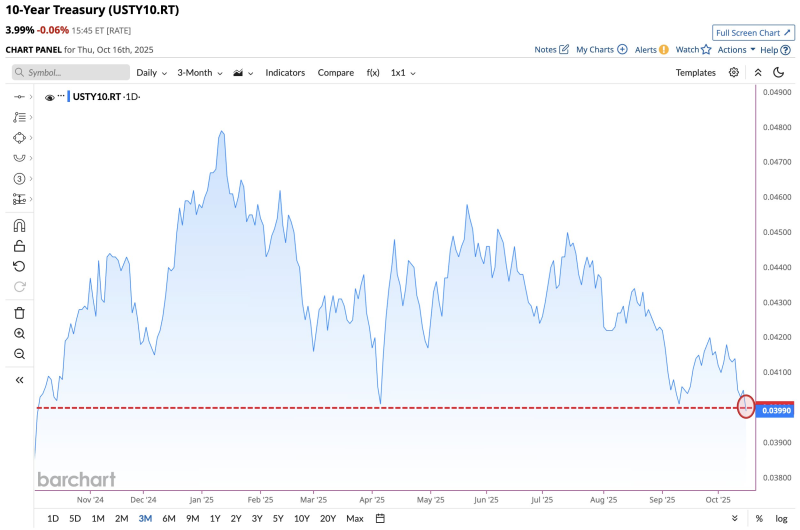● The U.S. 10-Year Treasury yield recently closed at 3.99%, dipping below the 4% threshold for the first time in more than a year, as noted by Barchart. This marks a notable shift after yields stayed above 4% through most of 2024 and early 2025, fueled by stubborn inflation and the Fed's restrictive monetary stance.

● The drop points to growing appetite for safe-haven bonds, typically a sign investors are getting nervous about economic momentum or global stability. While lower yields mean cheaper borrowing for the government—a fiscal breather in the near term—they also squeeze returns for pension funds, insurers, and banks, potentially creating weak spots in the financial system.
● For everyday borrowers, falling Treasury yields could translate to lower mortgage rates and corporate loan costs, which might give a boost to housing and business investment. But there's a flip side: sustained weakness below 4% could reflect concerns about slowing job growth and shrinking tax revenues, even as it might prop up stock prices.
 Marina Lyubimova
Marina Lyubimova

 Marina Lyubimova
Marina Lyubimova

